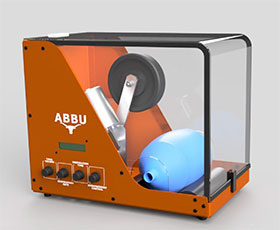Ventilator from windscreen wiper parts
16 April 2020
News

A research team at the University of Texas, Austin, is building a ventilator made of cheap, widely available materials to help fill the demand for critical devices that help patients breathe created by the spread of COVID-19. Ventilators become necessary when patients cannot breathe on their own, physically pumping oxygen into their lungs, and they are in short supply. The researchers are building a ‘bridge ventilator’ that can be replicated and mass produced by others.
The device, called the Austin Bridge Breathing Unit, uses a manual resuscitator, a common handheld device with an AMBU artificial medical breathing unit (AMBU) bag. It fills up with oxygen to help patients breathe. However a medical professional must repeatedly squeeze the bag to help patients inhale the oxygen − a challenge when medical personnel across the country are stretched thin due to the Coronavirus.
The researchers needed a way to automatically compress the bag to get oxygen to patients, and they found it in a windscreen wiper motor pulled from a Toyota Camry. The team repurposed the motor to power a small caster wheel that pushes down on the bag to control oxygen flow. Four potentiometers control the respiration rate, the volume of oxygen given to patients, the time period to inhale and the maximum pressure.
The team came up with the idea to use the motor during a brainstorming session. The advantages of these motors are that they are available, reliable and inexpensive. They are extensively tested as part of the automobile production process. To quickly figure out the motor, the team worked with a local mechanic. The team is currently testing the prototype on a manikin from the university’s Dell Medical School and test lungs provided by UT Health San Antonio.
Once the prototype is checked, the researchers will provide an open licence to the design so anyone can make their own low-cost, reliable ventilator. Along with a team from Dell Medical School, they are also talking with several manufacturing partners about quickly building at least 2000 ventilators.
The device’s components are all regulated individually, so the team hopes approval can come in a matter of weeks rather than months. Just recently, the FDA issued an Emergency Use Authorisation protocol to speed production of ventilators and other respiratory devices.
“The problem is that when ICUs fill up, there are no more ventilators,” said Thomas Milner, a professor in the Department of Biomedical Engineering in the Cockrell School of Engineering, who is leading the project. “And you can’t bring in new ICU beds because you don’t have the ventilators. Essentially, we are replacing the human hand that would normally depress against the bag to inject oxygen into the patient’s lungs.”
Further reading:
Powering Africa’s industrial Leap at the 2026 Manufacturing Indaba
News
The 2026 Manufacturing Indaba is set to bring together stakeholders to explore how reliable energy can unlock Africa’s industrial future
Read more...
Siemens andDucati extend partnership to advance innovation in MotoGP
News
Siemens Digital Industries Software has renewed its technical partnership agreement with Ducati, and detailed how the Siemens Xcelerator platform has been instrumental in helping the company to create increasingly powerful, safe and sustainable motorcycles.
Read more...
Your chance to make a difference by supporting UKZN’s SMART Lab research
News
UKZN’s SMART Lab is at the forefront of tackling international challenges through innovative, multidisciplinary solutions, and focuses on research that makes a tangible difference to society. Companies affiliated with the SAIMC now have an opportunity to make a meaningful impact through sponsorships.
Read more...
Hitachi Energy named world’s leading supplier of grid automation products and services
News
Hitachi Energy has been recognised as the global market share leader in grid automation for electric power transmission and distribution utilities by ARC Advisory Group.
Read more...
Latest evolution in DesignSpark PCB design software
RS South Africa
News
RS South Africa has announced the local availability of DesignSpark PCB version 13, the latest evolution of its award-winning PCB design software.
Read more...
SKF earns top CDP ratings, reinforcing climate leadership
SKF South Africa
News
SKF has been awarded an A score in the 2024 CDP Supplier Engagement Assessment, placing the company among the global leaders in supplier climate action and transparency.
Read more...
South African project to tackle e-waste
News
Every year millions of electrical and electronic devices and appliances are thrown away. This e-waste can become a threat to both health and the environment if they are not disposed of and recycled properly. Limpopo recently launched its E-Waste for Youth Employment in Limpopo Province project in order to change this narrative.
Read more...
Hans Beckhoff receives German Mechanical Engineering Award
Beckhoff Automation
News
Hans Beckhoff has received the 2025 German Mechanical Engineering Award. This prestigious award honours entrepreneurs who have set standards in machine and system engineering, driven innovation, and taken on social responsibility.
Read more...
Safe solar light for 150 000 people across Africa
RS South Africa
News
RS Group has announced a partnership with international development charity, SolarAid to deliver clean, safe solar lights to 150 000 people living in rural communities across Africa without access to electricity.
Read more...
Regalvanising is a cornerstone of the circular economy
News
Steel can be regalvanised three to four times, effectively doubling the lifespan of key infrastructure for 30% of the replacement cost. That is why the Hot Dip Galvanisers Association of South Africa sees regalvanising as a cornerstone of the circular economy.
Read more...


